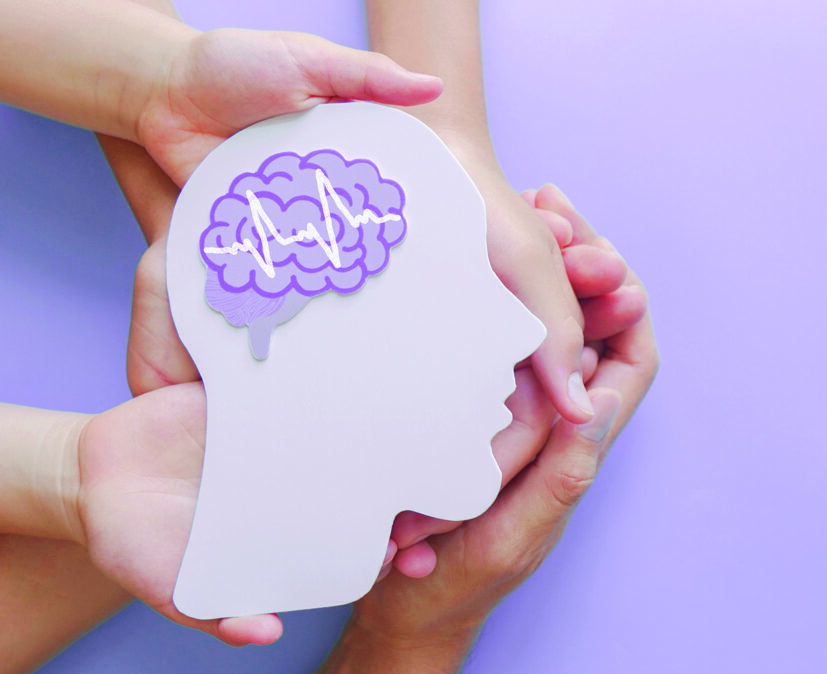
By Ashley S. Harris, OTD, OTR/L, CSRS Encompass Health Rehabilitation Hospital of Greenville
Stroke is a disruption in blood supply to the brain. In the United States, approximately 795,000 people will have a stroke this year. Stroke is a leading cause of disability, hospitalizations, and death.
There are two types of stroke: ischemic and hemorrhagic. Ischemic strokes occur when the blood supply is blocked. Roughly 87% of strokes that occur in the United States are ischemic strokes. A hemorrhagic stroke occurs when the blood vessel ruptures and blood leaks into the brain. You’ll often hear people refer to having “mini-strokes” or TIA. TIA can be a pre-cursor to a more detrimental stroke.
Stroke-like symptoms are a medical emergency, and you should seek immediate medical treatment. Patients who are treated in the Emergency Room within 3 hours of onset of symptoms often have less disability and occurrence of symptoms 3 months after stroke than those who delayed care.
No matter the type of symptoms, location, or type of stroke, permanent brain damage can occur within minutes to hours of the stroke occurring. A stroke can affect your swallowing, speech, your arm and leg strength, balance, coordination…anything you do. Deficits can be very mild or severe, and there is no predictor of how you will be affected. Stroke is a leading cause of significant long-term disability in the United States, and it reduces mobility in more than half of survivors over the age of 65.
If you have any deficits following stroke, you may be referred to physical, occupational, and/or speech therapy. This can be completed in your home, in an outpatient clinic, or in a facility. Physical therapy will work on your balance, walking, endurance, and strength. Occupational therapy will work on your self-care tasks (such as bathing, dressing, toileting, and eating), along with strength, coordination, endurance, and fine motor skills. Speech therapy can work on any deficits you have with swallowing, speaking, or thinking.
BE FAST is an acronym that was created to help remember stroke symptoms.
- Balance: Do you suddenly feel off balance or have a hard time walking?
- Eyes: Does your vision suddenly change?
- Face: Do you notice that your face feels numb? Are you having difficulty smiling? Do you notice one side of your face drooping?
- Arm: Are you suddenly unable to lift one arm up and keep it up? Do you suddenly lose feeling in your arm?
- Speech: Do you notice difficulty suddenly getting words out? Do you notice sudden difficulty understanding someone talking to you? Do you notice that you are slurring your words, like you have peanut butter in your mouth?
- Time: If you notice ANY of the symptoms above, it is TIME to CALL 9-1-1 for urgent medical attention. EMS can get you to the hospital fast for urgent treatment.
Risk factors for stroke include high blood pressure, diabetes, and high cholesterol. Approximately 33% of Americans have at least one of these risk factors. Having one stroke increases your risk for having additional strokes. About 185,000 strokes, or approximately 25% of strokes, occur in people who have already had a stroke. The biggest thing you can do to prevent a stroke is to have healthy living habits! These include:
- Choosing healthy food and drinks: increase water intake, eat fresh fruits and vegetables, decrease sodium intake. Eating foods that are lower in saturated fats, trans fats, and cholesterol can help to lower your risk. Choose foods that are high in fiber. This can help control your blood pressure, cholesterol, and diabetes.
- Keep a healthy weight: This can help to lower your blood pressure, cholesterol, diabetes to decrease your risk. Those who are obese or overweight are also at a higher risk for stroke.
- Get regular physical activity: You should aim for 150 minutes of brisk physical activity a week. This can help to lower your blood pressure as well as your cholesterol!
- Limit alcohol use: Too much alcohol can increase your blood pressure, increasing your risk of stroke.
- Quit smoking: If you are a smoker, quit. If you do not smoke, don’t start! Smoking narrows the arteries in your body, significantly increasing your risk of stroke.
- Visit your primary care doctor often: Having regular medical care and a physician oversight of your medical conditions can help you to control stroke risk factors.
Stroke is a serious, life-threatening and life-altering medical condition that can affect anyone. By remembering the BE FAST acronym and seeking immediate medical attention, you can be a stroke survivor!



